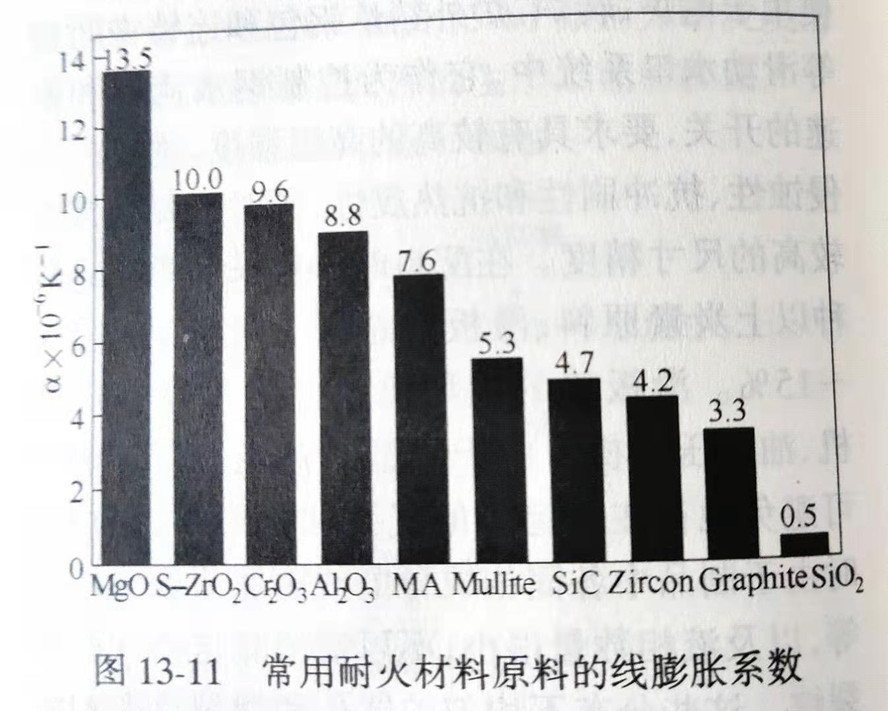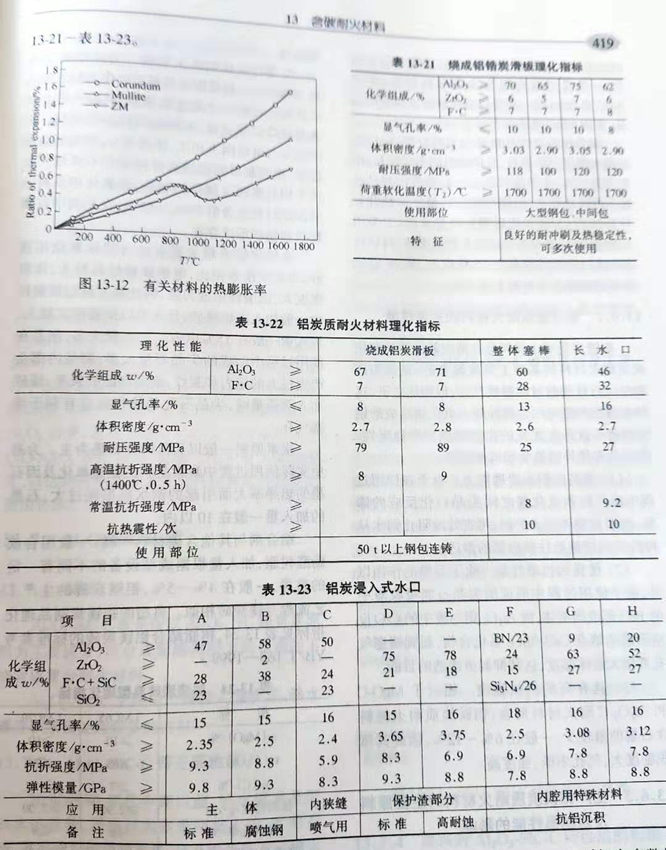Aluminium Zirconium Carbon Refractory
Aluminum zirconium carbonaceous refractories refer to aluminum carbonaceous refractories in which a certain amount of ZrO2 is added.
Aluminum zirconium carbonaceous refractory appeared, mainly in order to meet the requirements of multi-furnace continuous casting in continuous casting process, to solve the problem of aluminum carbonaceous refractory existing due to strength rise, thermal shock resistance decline, a kind of carbon composite refractory developed on the basis of aluminum carbonaceous refractory.
The main reason that affects the service life of aluminum-carbonaceous refractory is the formation of various cracks (thermal stress). In order to improve the service life of aluminum-carbonaceous refractory, it is an effective way to adopt materials with low expansion coefficient. Figure 13-11 shows the linear expansion coefficient of commonly used refractory materials.

It can be seen from figure 13-11 that the linear expansion coefficient of carbon materials is low, which can improve the carbon content in the ingredients. However, with the increase of carbon content, the risk of oxidation of aluminum carbon bricks increases. Once the product is oxidized, the anti - erosion and anti - erosion ability of the product is reduced.
The linear expansion coefficient of mullite is lower than that of corundum. Adding mullite to the ingredients can also improve the thermal shock resistance of the products. However, with the increase of mullite content, SiO2 also increases correspondingly, and the erosion resistance of aluminum carbon brick decreases.
From both can enhance the thermal shock resistance of carbonaceous refractory material, does not affect the slag resistance of the point of view, to join the zircon aluminum and silicon carbide can improve the thermal shock resistance of carbon brick, but looked from the use of performance, with the increase of zircon content, silica content is increasing accordingly, will eventually go against aluminum carbonaceous slag resistance of refractory; If the content of silicon carbide in the batchings is increased, the oxidation resistance of aluminum-carbonaceous refractory can be improved. However, once the content of silicon oxide in the products is increased after the oxidation of silicon carbide, the slag resistance of aluminum-carbonaceous brick will eventually be affected.
Therefore, the most effective way to improve the thermal shock resistance of aluminum carbonaceous refractories is to add zirconium mullite or AZTS (al2o3-zro2-tio2-sio2) into the ingredients. Sometimes, desiliconium zirconium can be added to improve the slag resistance of products.
Adding zirconium mullite into aluminum carbonaceous refractory can act as mullite on the one hand. On the other hand, when Zr2O2 is contained in the product, the MONOCLINIC zirconia [M(MONOCLINIC) -zro2] is transformed into tetragonal zirconia [T(tetragonal) -zro2] at 1000-1200 ℃ at low temperature, with a volume contraction of 7%~9%, as shown in figure 13-12. Therefore, aluminum carbonaceous refractories containing ZrO2 have a low expansion coefficient at high temperature and a strong thermal shock resistance. In addition, ZrO2 has excellent corrosion resistance. Therefore, the corrosion resistance and thermal shock resistance of al carbon refractories containing zirconium mullite are better than that of al carbon refractories containing mullite and general al carbon refractories. The physical and chemical indexes of typical aluminum carbon products are shown in table 13-21~ table 13-23.


